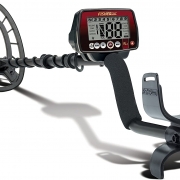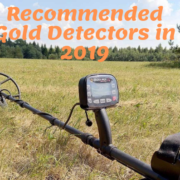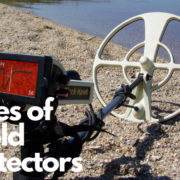What Are Gold Detectors?
Introduction
The Earth’s surface and core both are blessed with numerous resources which human beings exploit to keep the system running. These resources include precious and semi-precious metals hidden in many different forms below the Earth’s crust. One of the many challenges for people is to locate these metals and do the efforts required to dig in and extract them. Due to the technological advancements, it is now possible to determine if metal lies or not underneath the surface, without even starting to dig in. The modern equipment dramatically decreases the cost by showing probabilities of metal existence under the surface and saves much time. The equipment designed to detect specifically the gold-based metal and metallic alloys under earth’s crust is known as Gold Detectors.
Categories of Underground Gold
The Gold which is naturally existing below Earth’s crust could be classified into two major types:
Gold Nuggets
The accumulated pieces or chunks of gold metal varying in sizes starting from the size of ballpoint pen’s tip to various ounces formed under natural circumstances by Earth core’s temperature and pressure.
Fine Gold
The gold particles in powdered or dust form mixed with other non-valuable particles from soil, which are not detected by any radiation or contact with the gold detectors. Their size is so small they are unable to affect the detection mechanism of even the powerful metal detectors.
Basic Types of Detectors
Based on the types of outputs they provide, Gold detectors could be classified into four basic types which are:
-
Analog Gold Detectors
Detectors having an analog output where a needle deflects between two points when in contact with the threshold size of a metallic object showing relatively inaccurate reading but still signifies the presence of the object in question. These types of detectors are mostly obsolete but can be found in very beginner level equipment where precision is not the goal.
-
Digital Gold Detectors
A rather advanced form of output where the model and build of detector assigns a number to the precious metal and non-precious metallic compounds where the readings close to the largest possible number indicate the purest metals underneath the surface whereas the numbers in lower possible ranges mean irrelevant metallic compounds.
-
Sound Based Gold Detectors
The type of detectors which make a beeping sound when metal is detected within its range and no other relevant information is provided whether the metal is in which category or its distance from the surface etc. However, the sound is louder in case of proximity and fades when the distance increases, which is vague but still effective in some situations. This technology can be seen in handheld security detectors as well as walk through gates.
-
3D Graphics Based Gold Detectors
These gold detectors present the information in the form of colorful graphical representations where each of the colors means a specific metal or metallic compound in terms of the object’s purity.
Huge Gold Nugget Found!
Recently, an Australian treasure hunter found a ginormous gold nugget weighing 49 ounces and grossing up to $49,000 in value! Yes, treasure hunting is a thing and gold metal detectors facilitate hunting them out from deep down the Earth.
How Gold Detectors Work
Basically, gold detectors receive direct current from the battery, convert it into alternating current, which creates a magnetic field. This magnetic field emits electronic waves (eddy current) into the ground which when absorbed by a metallic object, create its own magnetic field. This new magnetic field distorts the earlier magnetic field and sends current to the receiving coil, which shows the output of positive metal detection.
Frequency of Gold Detectors
Frequency means the number of electronic waves a detector throws into the ground. Each frequency range is sensitive to a different type of compound and depending on the model and brand, these frequencies can vary. However a general rule is, that higher frequency results in decreased depth, but it becomes more sensitive and detects when smaller objects.
Elements of Gold Detectors
-
Coil
The circular base of the metal detector having the arrangement of wires in it in which the current flows and generates a magnetic field is called coil.
-
Shaft
The long structure giving support to the coil and including a grip to hold the detector which makes it easier to carry and move the equipment around easily.
-
Control Unit
The device attached to the coil which receives input from the operator and gives output about the object is the control unit.
Technologies in Coil
-
DD Coil
An advanced form of the coil where the wiring within the apparatus is divided into two semicircles making a D and inverted D connected. It helps differentiate the ferrous and non-ferrous compounds within the ground which makes it easier to distinguish between gold and trash.
-
Mono Coil
A simpler coil having wires arranged in its circumference where the circle is tightly wound covering more depth than DD coil but has the disadvantage that it does not discriminate between ferrous and non-ferrous compounds.





 03111444615
03111444615